What’s not to love about Lisbon? The Portuguese capital has a distinctive combination of European charm (black and white cobbled streets and squares, plus beautiful tiled buildings) with a laid back seaside vibe (blue water and sky for days). Its grit is that of a well-worn pair of shoes, while its beauty is unassuming and seemingly ubiquitous. The city is the epitome of cool and home to some of the warmest people you’ll ever meet. My all too short trip to Lisbon left me wanting more, knowing that this is a place I will definitely return to. Here’s what you need to know.
Getting There and Around
Lisbon’s Portela Airport is very close to the historic center (only about 4 miles away) and one of the easiest and cheapest options to get to the city is by metro. You can take the red line directly from the airport, which also has connections to the green (at Alameda), yellow (at Saldanha) and blue (at São Sebastião, the last stop) lines depending on where you’re staying. The metro operates from 6:30 a.m. to 1 a.m. and travel time is only about 20 minutes. Another easy and affordable option to get to the city is the AeroBus. This shuttle offers direct service between the airport and the Cais do Sodre train station daily from 7 a.m. to 11 p.m., with stops at major hubs and hotels throughout the city. From the airport, the City Center line 1 departs every 20 minutes and will have you in the heart of Lisbon in about 30 minutes. Tickets are valid for 24 hours and can be bought online, onboard or at other points including the airport, and offer additional discounts on Yellow Bus sightseeing tours so you can hit the ground running. And if you’re planning on buying the Lisboa Card sightseeing pass (more on that later), do that first because it comes with a discount off the purchase of you AeroBus ticket, an added bonus.
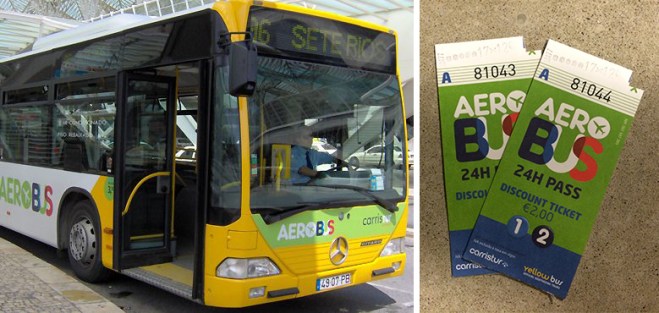
While many sights in Lisbon are easy to see on foot, others may require public transportation given the city’s hilly terrain. In addition to the metro and Carris public buses, a fun way to get around is aboard one of Lisbon’s electric trams. While there are several lines, two of the most popular routes for visitors are #12E, which makes a circular loop around the Alfama district from Praça da Figueira, and the historic #28E, which travels through many of Lisbon’s most popular squares, neighborhood and sights, providing a great first introduction to the city. To reach higher ground, you can also ride one of the 3 funiculars – Ascensor da Glória, Ascensor da Bica and Ascensor do Lavra – or the Elevador de Santa Justa lift.
What to See and Do
Lisbon’s historic center is divided into a handful of districts, each one with its own character and charm. The most central is the Baxia (lower town), Lisbon’s downtown that stretches from Avenida da Liberdade to the beautiful Praça do Comercio (location of the ViniPortugal wine tasting room) before spilling into the river. Here you’ll find other elegant squares like Praça do Rossio and Praça da Figueira, pedestrianized streets with cafés and tons of options for shopping, from smaller stores to the huge Armazéns do Chiado mall, as well as the unmistakable iron Elevador de Santa Justa. You’ll find a similar vibe of rich culture and chic shopping in the neighboring Chiado district.
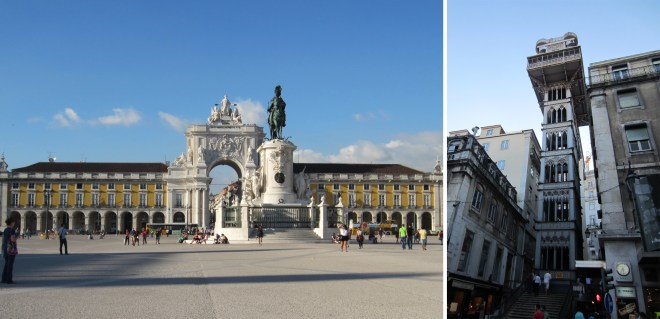
By contrast, the more bohemian Bairro Alto (high town) is relatively quiet during the day but becomes alive at night with tons of great restaurants, bars and Fado houses. However, one worthwhile shop in the Bairro Alto to keep on your radar is CORK & CO. This boutique specializes in a surprising variety of products made from one of Portugal’s top commodities (the country is responsible for about half of the world’s supply of cork), ranging from umbrellas to jewelry and more.
The Alfama district to the east of the Baxia is home to the Castelo de São Jorge, a medieval playground of towers and ramparts with one of the best views of Lisbon. This hilly district survived the 1755 earthquake and has retained much of its original charm – think narrow winding streets, small squares and white washed buildings with red roofs. You’ll also find several churches here including the Sé Cathedral, as well as some unique museums like the Fado Museum and the National Tile Museum further east.
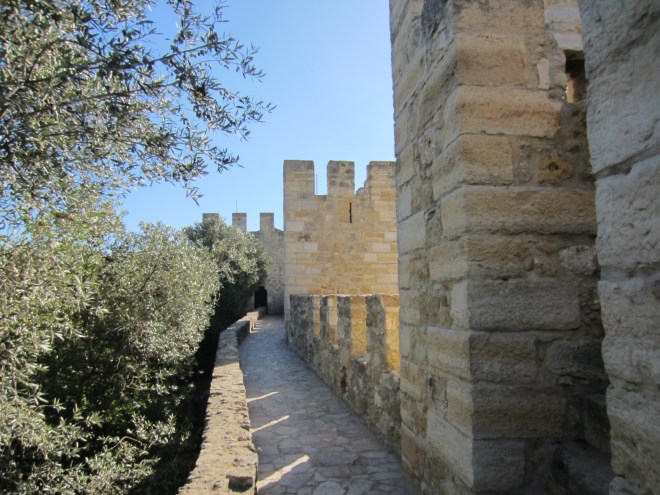
West of the city center is the Belém district, an area that played an important role during the Age of Discovery. Major sights here include the impressive Monument to the Discoveries, Belém Tower, Jerónimos Monastery and National Coach Museum, plus great views of the 25th of April Bridge and Cristo Rei statue across the Tagus River. No trip to Belém is complete without indulging in one of its trademark “pastel de nata”. Go to Pastéis de Belém (near the tram stop) where they are rumored to make 20,000 of these custard tarts per day, so are guaranteed to be warm and fresh when you order them. To get to Belém, hop on tram #15E from Praça da Figueira, Praça do Comércio or the Cais do Sodré station and get off at the Mosteiro Jerónimos stop (about 30 minutes). You can pick up the tram or one of several buses at the same spot when you’re ready to go back.
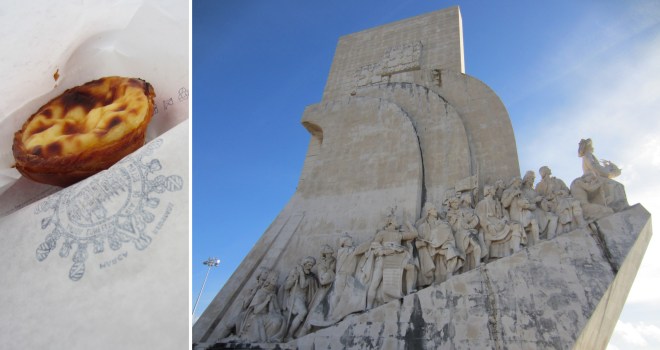
For a break from the city you can the beach from Lisbon, the closest being Tamariz with its overlooking castle in Estoril (about 30 minutes away by train from the Cais do Sodre station). Another daytrip idea – one that’s an absolute must in my opinion – is the storybook town of Sintra. Located 20 miles northwest of Lisbon, it’s less than an hour away by train from Rossio Station. Upon arrival, you’ll be greeted by charming cobbled streets in the lower town, which is overlooked by the moss-covered Moorish Castle and the still higher fairytale-like Pena Palace. Rain or shine, Sintra is a magical place that will leave you feeling like a king for a day.

If you plan on doing a decent amount of sightseeing in Lisbon, I definitely recommend buying the Lisboa Card. This sightseeing pass gives you free or discounted admission to most of Lisbon’s major museums, sights and tours, along with other sights in Belem and Sintra, plus unlimited use of all public transportation for 24, 48 or 72 hours. We hardly scratched the surface of the Lisboa Card’s benefits and felt that it was well worth the investment.
Where to Eat and Drink
In Lisbon you’ll find a wide variety of places to eat ranging from casual back alley tavernas to hilltop restaurants with great views. Thanks to Portugal’s role in the Age of Discovery, explorers brought back “exotic” foods such as tomatoes, potatoes and spices, which have since became staples in the country’s cuisine. You’ll also see lots of seafood, especially salted cod and sardines, as well as soups, petiscos (the Portuguese take on tapas), roasted chicken (often with spicy piri-piri sauce) and pork dishes, along with Lisbon’s trademark light and slightly fizzy white wine vihno verde. Most locals dine around 9 p.m., so be prepared to eat late in Lisbon. And don’t assume that appetizers like olives or bread that are brought to your table are included, you’ll be charged for anything you eat.

One of my favorite areas for dining and nightlife is the Bairro Alto. Here your find a high concentration of great restaurants and bars, one right after another along the grid like streets west of Rua da Misericórdia and north of Rua do Loredo. Another popular place is the Docas, which is home to a string of international restaurants and bars on the waterfront. Located under the 25th of April Bridge between the Baxia and Belem, this former warehouse district has been transformed into a great spot for a leisurely afternoon or lively evening.
One restaurant in particular that I did not make it to (but is on my list for next time) is Can the Can off Praça do Comércio, which puts a gourmet twist on canned food. To get your sweet fix, stop by Confeitaria Nacional off Praça da Figueira, the oldest confectioners shop in the city dating back to 1829. At least once you should also try ginjinha (pronounced zheen-zheen-ya), a cherry liquor that’s made by infusing sour cherries in alcohol. Get it at A Ginjinha, a tiny street bar off Rossio Square. Here are a few other recommendations for places I visited.
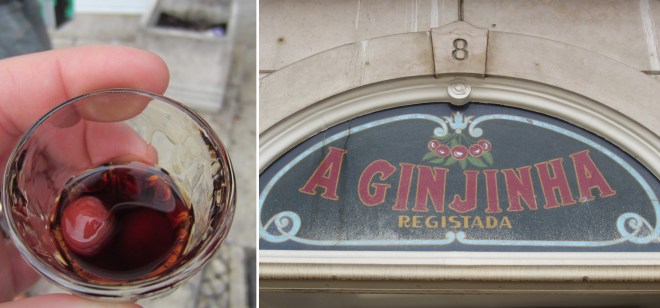
Where to Stay
Our original plan was to stay at the LX Boutique Hotel near the Cais do Sodre station in the Bairro Alto district because of its locally-inspired rooms and proximity to restaurants and nightlife. Unfortunately there was a last minute maintenance issue, but we were seamlessly switched to the Fontecruz Lisboa on Avenida da Liberdade. Despite the change the location was perfect, it was easy to get around Lisbon on foot and provided access to major metro, bus and airport shuttle stops. Our room was clean, modern and spacious (all rooms have either black or white décor, ours was black and a little on the dark side), and the hotel offered free wi-fi at the time of our stay and a nice continental breakfast for an additional charge. The hotel staff was also very kind in offering us an early breakfast on our last morning so that we could catch a flight.
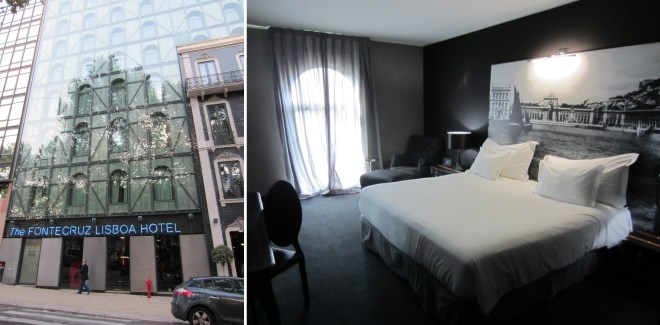
Also Good to Know
Portuguese is a hard language for many people but we found locals in Lisbon to be extremely friendly and helpful. And because of the volume of British tourists that go on holiday in Portugal, many signs and announcements on the metro are in both Portuguese and English (with a British accent of course!). Just remember to be polite and have a few basic words like bom dia (good day), por favor (please) and obrigado/a (thank you) in your back pocked and you should have no problem.

Get the information in this article on-the-go with the GPSmyCity app! Click here for more details.


Great post about Lisbon!
LikeLiked by 1 person
Thank you so much!
LikeLike
Wonderful guide! The ginjinha spot is awesome :)
LikeLiked by 1 person
Thank you! It was such a cool experience!
LikeLike
Hey! I nominated you for a blogger award :) https://samanthafaloon.wordpress.com/2015/08/11/leicester-blogging-award/#more-1268 Great post btw! I would love to visit Lisbon
LikeLike
glad to read your impressions and see your photos from my hometown!! cheers PedroL
LikeLike
Thanks for a great introduction to Lisbon where I will be arriving in a week’s time to walk the Camino.
LikeLiked by 1 person
You’re welcome, I hope you have a wonderful trip!
LikeLike